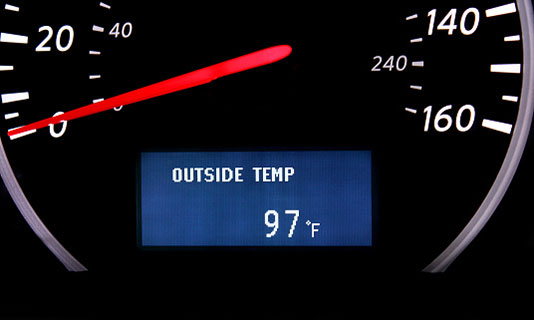Ten minutes, 20 degrees, and one tragic mistake are all it takes.
Summer has barely begun and already 11 children have died due to vehicular-related heatstroke this year, according to the National Highway Traffic Safety Association (NHTSA).
The deadly pace puts the country on par with last summer, when 39 children died from the condition.
While it may seem like such tragedy could only be borne of the utmost negligence, conditions for heatstroke can set in deceptively quickly. In just 10 minutes, a car’s interior can jump 20 degrees—enough to prove deadly on an 80-degree day, according to the U.S. Department of Transportation (DOT).
But such danger exists even in milder weather. The interior of a car can still reach temperatures upwards of 110 degrees when outside conditions are low as 57 degrees, the NHTSA reports.
Children are especially susceptible to vehicular-related heatstroke, as their bodies overheat more quickly than those of adults—about three to five times faster, according to the DOT. Once a child’s body temperature reaches 107 degrees, he or she can succumb to the deadly ailment.
Adding to that risk factor are both the innate curiosity of children and the tendency of new parents to be distracted, overtired, and overwhelmed.
Between 1988 and 2014, there were 701 vehicular-related heatstroke fatalities. But 82% of those incidents were caused by a child either getting into a vehicle without an adult around or being mistakenly left behind by a caretaker, according to a Forbes report on the issue.
To combat the deadly problem, the NHTSA has several recommendations:
- Establish a routine of checking the backseat before walking away from your car.
- When someone else is driving your child, call to check that everything is okay.
- Keep a visual reminder, such as a stuffed animal or children’s toy, in the front passenger seat to remind you that your child is still in the back.
- Keep your keys out of reach. Three in 10 heatstroke incidents happen when a child is able to let him or herself into a car without an adult’s knowledge, the NHTSA reports.
